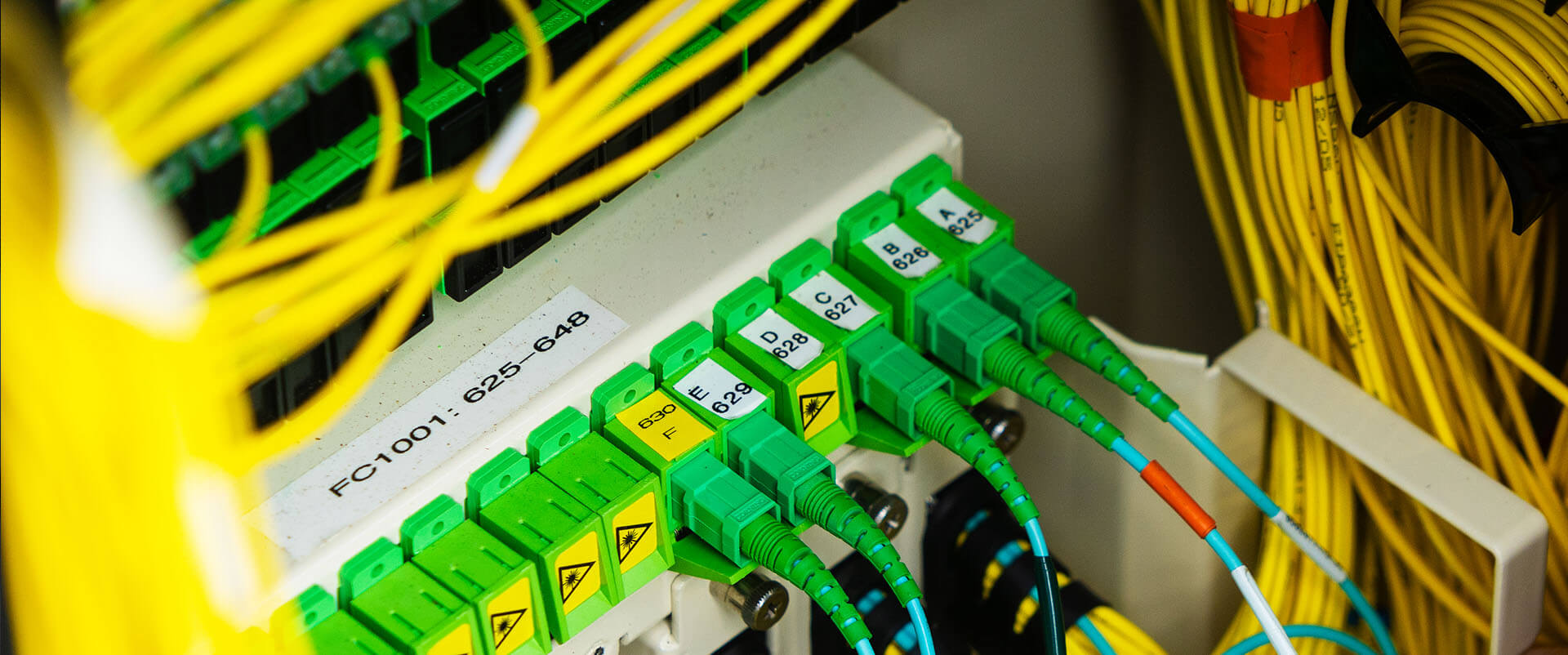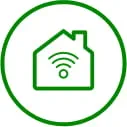Fiber-optic internet isn’t a fad. It’s quickly outpacing cable and DSL as the faster, more reliable option for online connectivity. As we careen into an even-more connected future, we’re going to see fiber internet become more universal. So you may be wondering, why isn’t fiber internet ubiquitous yet? What’s it going to take to get fiber internet installed in every home in America?
Why fiber internet is better than cable internet
First, we should talk about why fiber internet matters. Cable internet is still widely used and still a good technology, but it’s old. First of all, cable connections rely on copper coaxial wires that can handle smaller amounts of network traffic and struggle to reach super-fast speeds that we increasingly want and need.
Fiber internet, by contrast, uses thin glass wires to transport data via light, rather than electrical pulses. This makes the connection speeds significantly faster and decreases network traffic jams that slow you down in the form of buffering wheels, lag and glitch. Fiber also has the advantage of symmetrical speed, which means that your upload and download speeds are the same. This also accounts for a reduction in lag and glitch. Northwest-based Ziply Fiber, for instance, can provide home internet speeds up to 50 Gigs — the fastest in the entire country. That’s 50 gigabits upload and 50 gigs download. There’s not even a word for how fast this is.
For more on the differences between cable and fiber, check out this blog post.
What it takes to build fiber
Because fiber is a newer technology, it’s still being built out. Like any infrastructure, fiber requires physical construction and labor. Without getting too deep into the details of how telecommunications work, basically, fiber wires need central offices where they plug into circuits and connect physically to local homes and businesses.
Watch our video on what to expect when fiber internet comes to your town.
To connect fiber internet lines to their destinations, construction crews need to connect them to utility poles or via trenches underground. How they decide to do this depends on many factors, including geographical considerations and local government regulations. Another technology to build out fiber is underway called microtrenching. Microtrenching is a less invasive, less expensive and faster method of installing fiber underground.
Large investments of time and money go into building out fiber internet connectivity. Local governments and city officials need to get on board and permits need to be filed and approved before the shovel hits the proverbial ground.
Read more about what it takes to build out fiber internet here.
How fiber gets connected to your home
Once fiber-optic internet is “lit up” in a city or region, it’s time to connect it to individual properties. After signing up for fiber internet with an internet service provider, like Ziply Fiber, the customer will need to schedule an installation appointment. At that appointment, a technician will come out to the property and assess whether it’s “fiber ready” or if there’s additional work to be done – like digging a small trench on the property to bring the fiber line from the road to the house, if utility poles are not available.
Watch our video on what to expect from your fiber internet installation.
Once fiber is connected to the property, a technician will turn it on in the home or building by connecting it to an ONT (optical network terminal), which is similar to a modem. This box usually lives on the outside wall of a home. The technician may need to drill a small hole in the wall to bring the wire into the home or building. At this point, the wire connects to a router that delivers a WiFi signal. Depending on the size of the space, you may need WiFi extenders to broadcast the signal farther.
Learn more about what equipment you need for fiber internet here.
What to expect once you have fiber-optic internet installed
Connecting fiber internet isn’t much different than installing cable internet to the naked eye. The backdrop of building out the network connections is, however, more arduous based on the newness of the technology. If you’re frustrated with your slow and unreliable connection and longing for the day when fiber arrives, take note that the process doesn’t happen overnight. That said, the United States is committed to getting high-quality internet to every resident, and more telecommunications companies and investors are recognizing the need to expand fiber-optic networks. As our present and future become more reliant on reliable, fast connectivity, it’s only a matter of time before fiber internet reaches far and wide.






